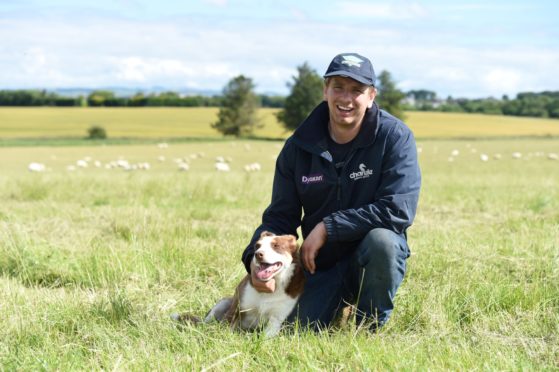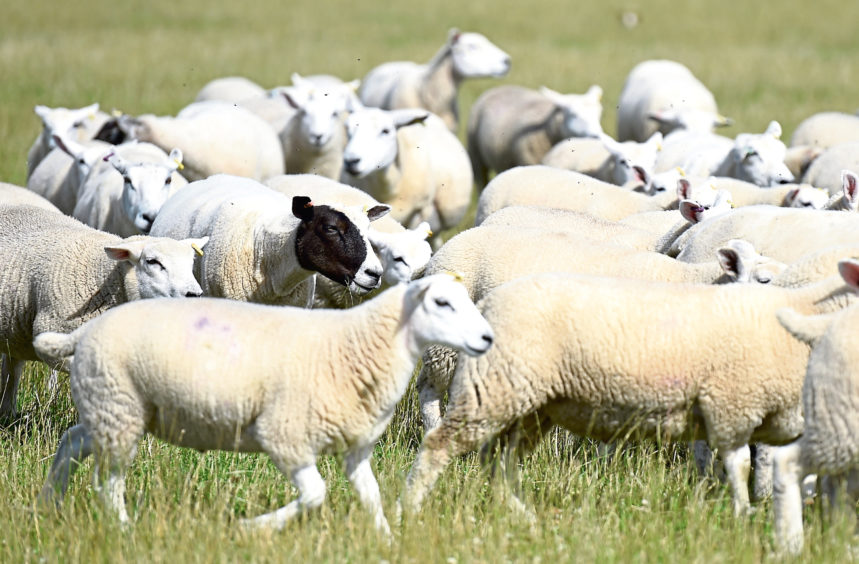An Aberdeenshire livestock farmer has improved his knowledge of selecting prime lambs for slaughter after a workshop organised by Quality Meat Scotland (QMS) earlier this year.
Gary Bruce, who is a product manager for ACT Scotland and finishes 1,200 prime lambs near Ellon, attended one of the Meat the Market workshops at Woodhead Bros in Turriff.
The events, at processing plants across Scotland, gave farmers advice on improving livestock selection and presentation to ensure meeting market specification.
Attendees were shown how the EUROP grading system works and the handling points of selecting prime lambs, before putting it into practice and receiving a demonstration on grading.
Mr Bruce said the workshop taught him to select lambs ready for slaughter by handling them and assessing fat cover, as apposed to selecting by weight.
“I was previously picking out my lambs for slaughter on what they weighed and although I was fairly accurate at hitting the 21kg carcase specification, I am now able to select them at the correct fat class,” he said.
“With that in mind and by handling the lambs in the correct areas, my carcases are now producing 3L and 3H grades, and there are less going away with 2 or 4L and 4H grades.”
After attending the workshop in February, he said he is more aware of how market specifications differ based on customer requirements and how carcases are graded.
He said: “The Meat the Market workshop gave those who attended the chance to have an open discussion with the buyers and find out exactly what kind of carcase they are after.
“We were also able to correlate between a live lamb and the grade it receives by handling some of the lambs in the lairage prior to being slaughtered.
“The group then followed the lambs through the slaughtering process to see how accurate the guessing was and it was then explained to us how the grader came to the different grades.”
Mr Bruce said nearly all farmers at the workshop who handled the live lambs predicted that they were too lean, but soon found out that after being slaughtered and hung up, the carcases actually hit target at 3L or 3H.
“Hitting market specification is extremely important and it’s my aim to be in the top 5% or even 10% of profitable lamb finishing enterprises to get the maximum return on my investment,” he said.
“This doesn’t mean to get the maximum price per head each time but to try and aim to wedge a bigger gap between the cost of production and the income from lamb sales.”
Mr Bruce has been in the QMS cattle and sheep assurance scheme since day one and buys store lambs throughout August and September, with 30% bought privately, 60% from Dingwall & Highland Marts, and the remainder bought through Aberdeen & Northern Marts’ Thainstone Centre near Inverurie.
The majority of lambs are Suffolk crosses and go straight to seasonal grass lets to build frame, where they usually produce a daily live weight gain of 0.15kg.
Once the lambs reach 38kg they are fed a total mixed ration and produce between 0.3kg to 0.35kg per day.
All lambs are sold direct to the abattoir, with 90% sold to Woodhead Bros and the remainder sold to Kepack McIntosh Donald at Portlethen.
“I would encourage any farmers who haven’t attended the Meat the Market workshops to consider registering for future dates as you become more aware of the whole process from start to finish,” added Mr Bruce.
For more information about selecting lambs for slaughter, tune into episodes five and six of the QMS podcast which focuses on maximising returns through meeting carcase specifications with speaker George Allan, Scotland and North of England divisional manager for Meat & Livestock Commercial Services Ltd.
The QMS podcast series focuses on initiatives which can help Scottish farmers improve the productivity, profitability and sustainability of their businesses.
To register your interest in attending the next round of Meat the Market workshops, please email Beth Alexander at QMS on balexander@qmscotland.co.uk

